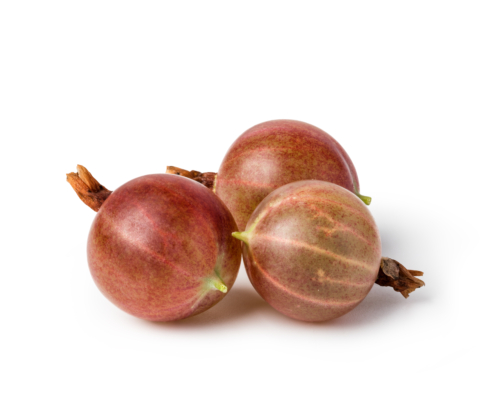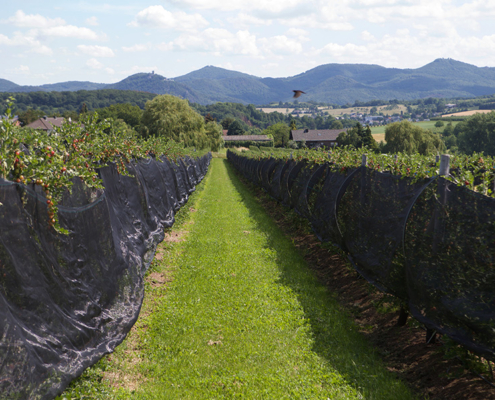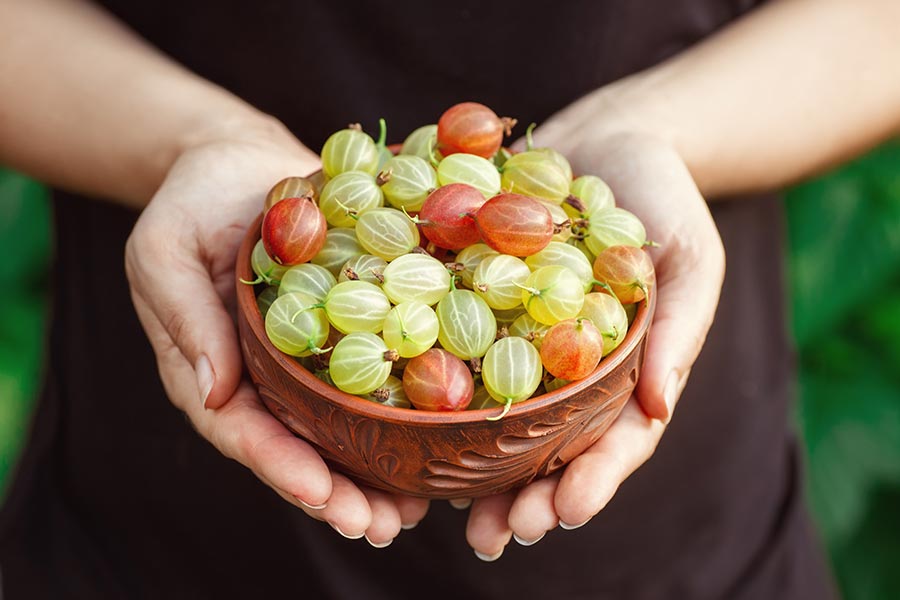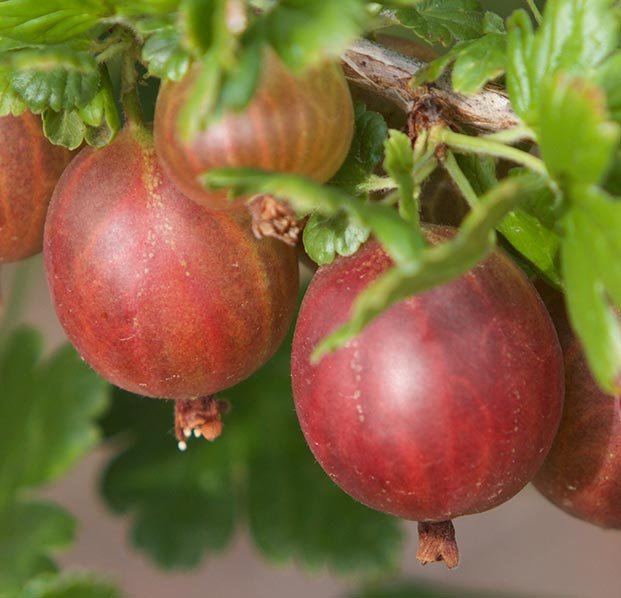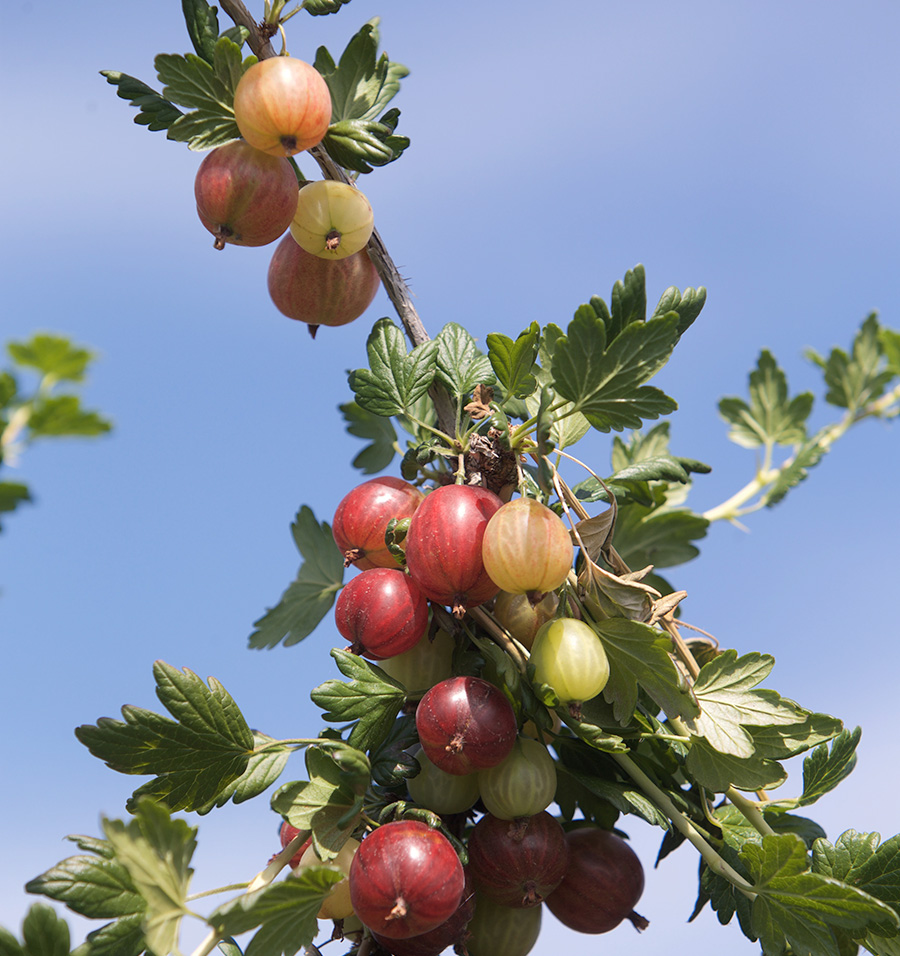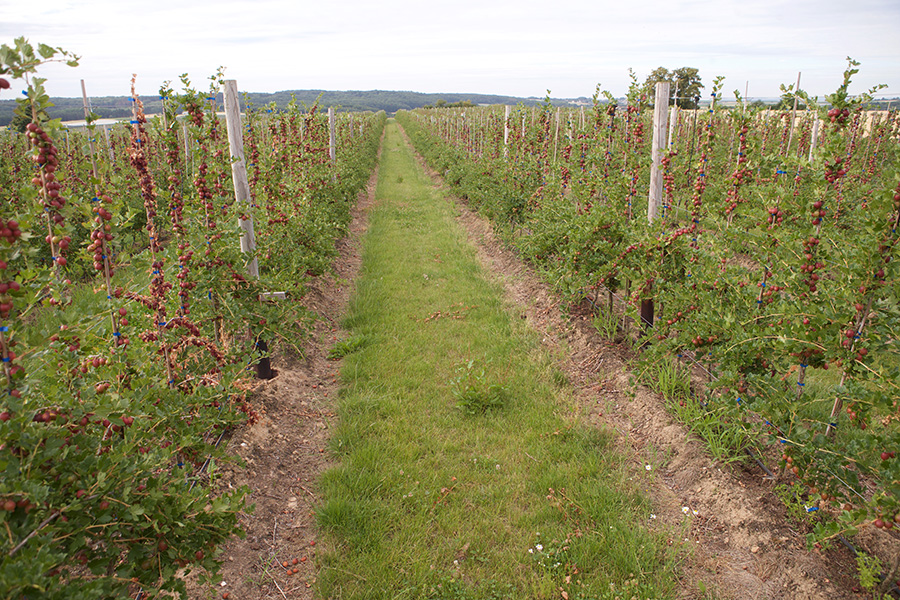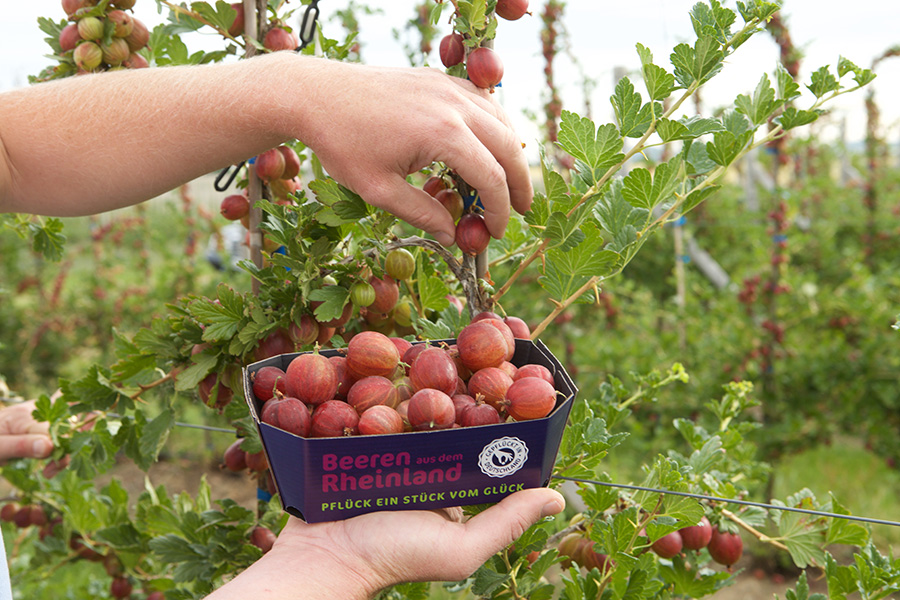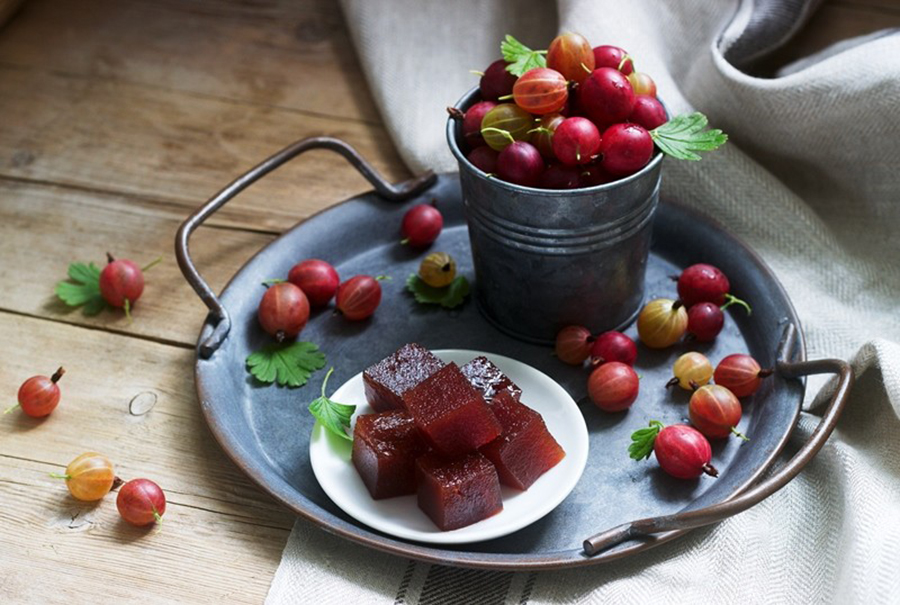Our gooseberries
Our gooseberries are pink-red, plump and firm fruits, sweet and sour with an aromatic fragrance – a true happiness!
Johannes Quast , one of our growers for gooseberries:
“Happiness for me means being able to work in a family business, in a varied and versatile profession, especially if you end up with a good harvest.”
Anbaumethoden
Junge Stachelbeersträucher werden im Frühjahr oder Herbst und überwiegend im Freiland gepflanzt. Zum Schutz erhalten sie immer öfter Schattiernetze. Bei der Stachelbeere handelt es sich um eine Dauerkultur – ihre Plantagen werden 10 bis 12 Jahre alt.
Ernte & Lagerung
Die heimische Stachelbeersaison beginnt Mitte Juni und geht bis etwa Mitte August. Im Anschluss gibt es noch deutsche, gekühlte Lagerware bis zur Weihnachtszeit.
Pflücken
Zwei bis drei Jahre nach der Pflanzung können die ersten Früchte geerntet werden. Die reifen Beeren werden im Ganzen von Hand gepflückt.
Reifestufen
Stachelbeeren reifen gleichzeitig und werden daher ein- bis zweimal geerntet.
Our varieties
Achilles | Pax | Red Orleans | Red Triumph | Xenia
Frutania gooseberries
Gooseberries, originally from Euro-Asia and the Mediterranean, complement our berry program.
Frutania gooseberries from German cultivation are available from: May – October
Consumer tips
Purchasing
Fully ripe gooseberries should look nice and plump, and their skin should be intact.
Storage
Fully ripe gooseberries should be consumed three to four days after purchase. The so-called green pick keeps refrigerated up to two weeks and is good to use in cooking jam, compote or juice.
Preparation
Gooseberries taste pure and are very popular in sweet summer cuisine, conjuring up delicacies such as compotes, cold dishes, cakes and pies.
Traditionally, gooseberries are also popular for canning and preserving, and their high pectin content makes jam or jelly gel particularly well.
The gooseberry
Small encyclopedia
According to monastic herbal books, gooseberry was already used in the 14th century. grown and was known by the then common name monastery berry. At the beginning of the 19th century there were already around 100 cultivars.
The gooseberry got its name because of its prickles. However, from a botanical point of view, it does not have spines but thorns.


